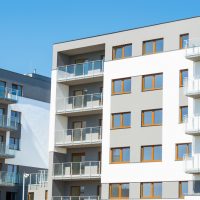
Data from six mortgage lenders submitted to the Department for Levelling Up, Housing and Communities (DLUHC) found that this equated to 4,000 flats out of the 43,000 that were valued for a mortgage during the period.
This was up from 3,000 flats which required an EWS1 or equivalent form, out of the 35,000 valued in the three months to March.
Annually, this was lower than the 5,000 flats where an EWS1 form or its equivalent was requested by lenders, out of 54,000 properties.
The height of a property was the driving factor for EWS1 requests, as indicated by data covering 30,000 flats across four lenders.
Some 62 per cent of these flats which required an EWS1 form were seven storeys or higher, while 32 per cent were five to six storeys tall.
Just two per cent were low-rise properties of one to four storeys and seven per cent were a combination of mid and low-rise buildings.
Compared to the previous quarter, there was a similar share of low-rise and combination buildings requiring an EWS1 form or equivalent. In Q1 this year, mid-rise properties made up 28 per cent of EWS1 form requests and high-rise buildings accounted for 53 per cent.
The spread of properties requiring an EWS1 form in Q1 was broadly similar to Q2 last year.
The mortgage valuations that form this data refer to valuations made as part of a mortgage application for regulated mortgages, buy-to-let mortgages and second home mortgages.
The DHULC said it was working with lenders to improve the quality of the data and examine the impact of EWS1 forms on mortgage transactions.
The department said the data covered the majority of the lending market.
















